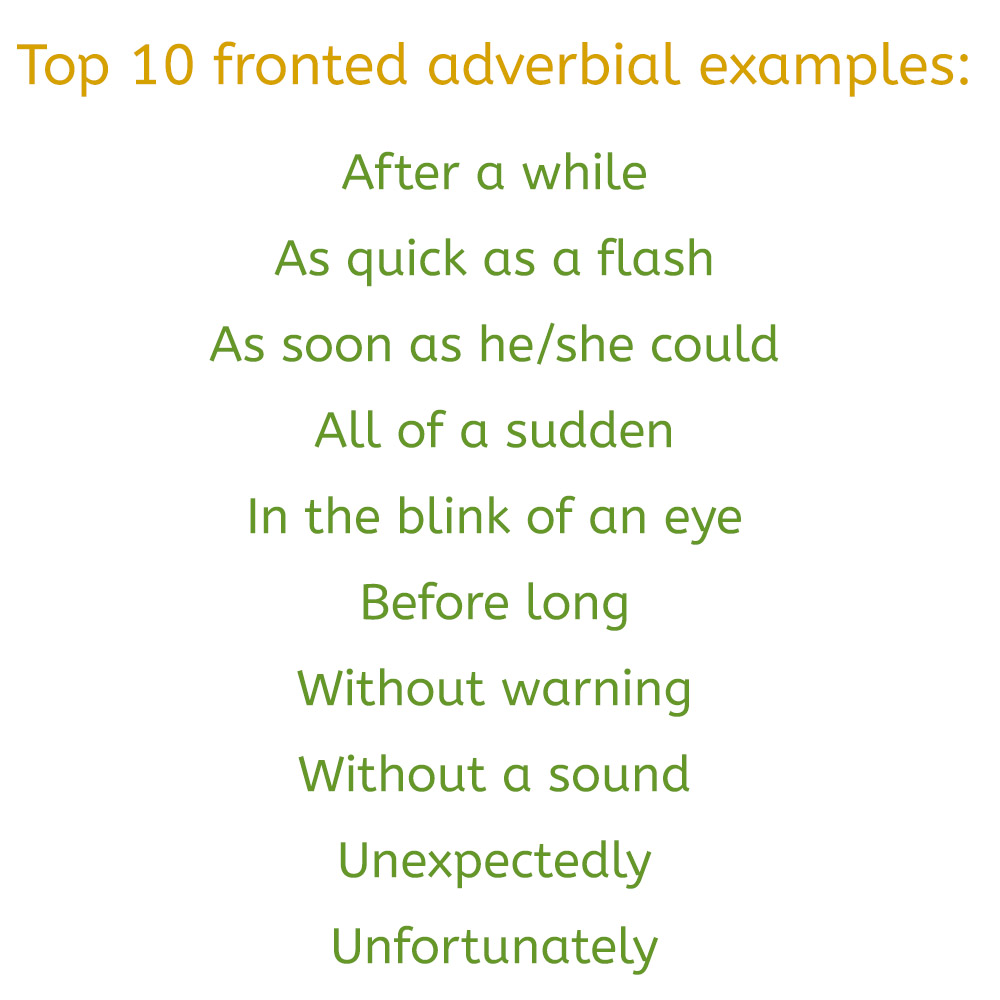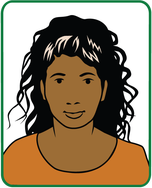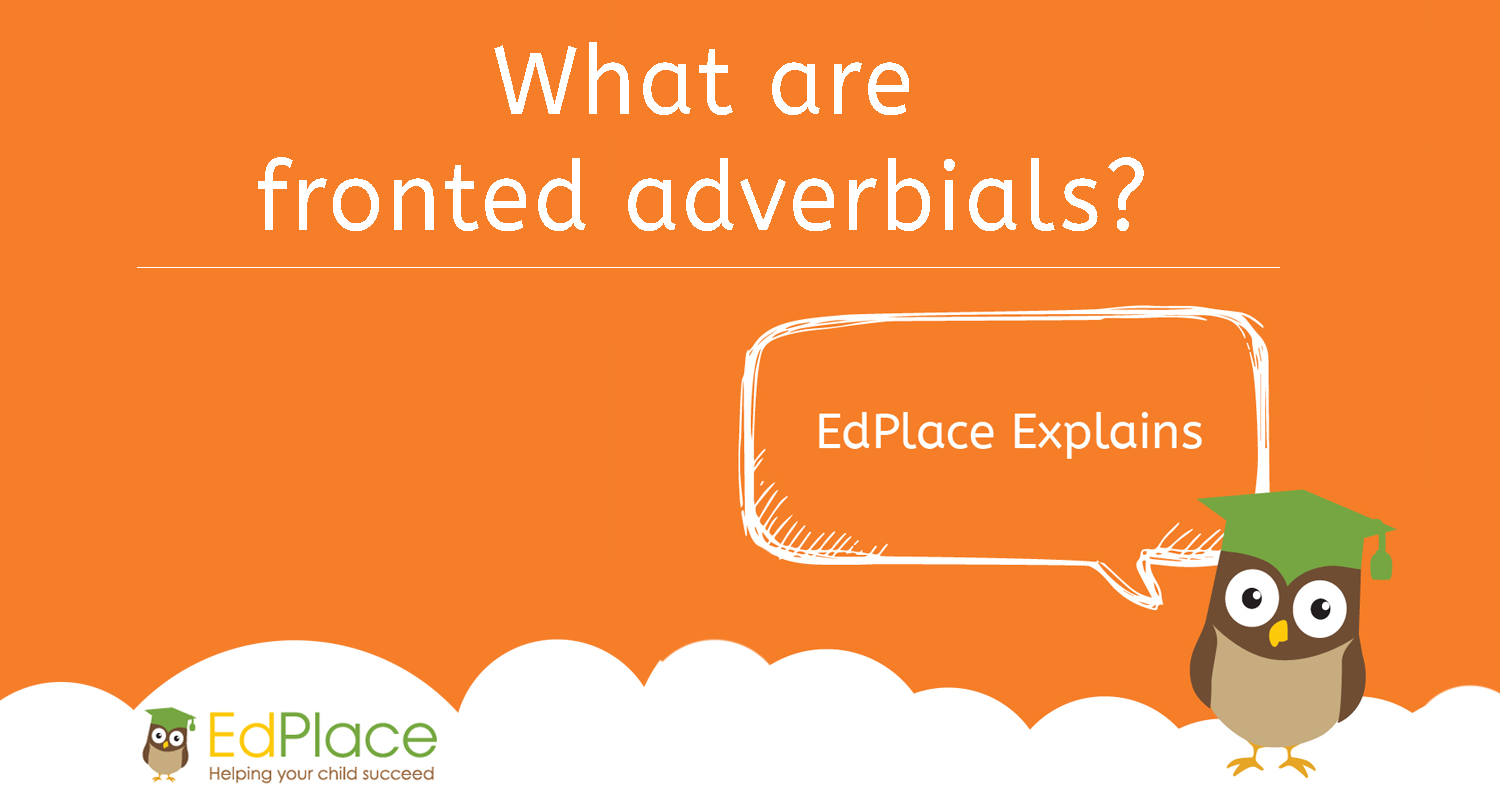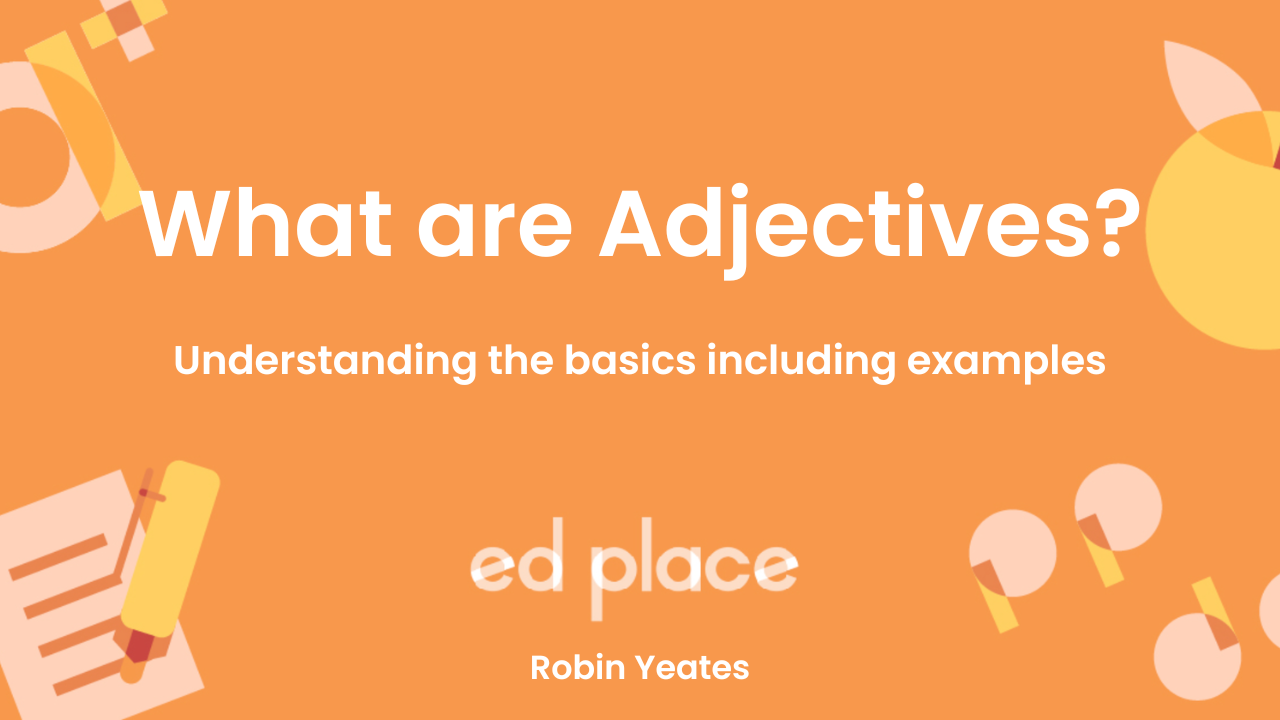What are Fronted Adverbials?
Fronted adverbials, put simply, are the words or phrases at the beginning of the sentence to describe the action that follows;
As soon as she could, Tracey ran out to play. (time)
Occasionally, Mum would allow us to select a sweet in the shop. (frequency)
In the distance, he could see the train coming. (place)
As fast as he could, Jack ran home from school. (manner)
Completely exhausted, Holly clambered out of the pool. (degree)






.png)
.png)
.png)




